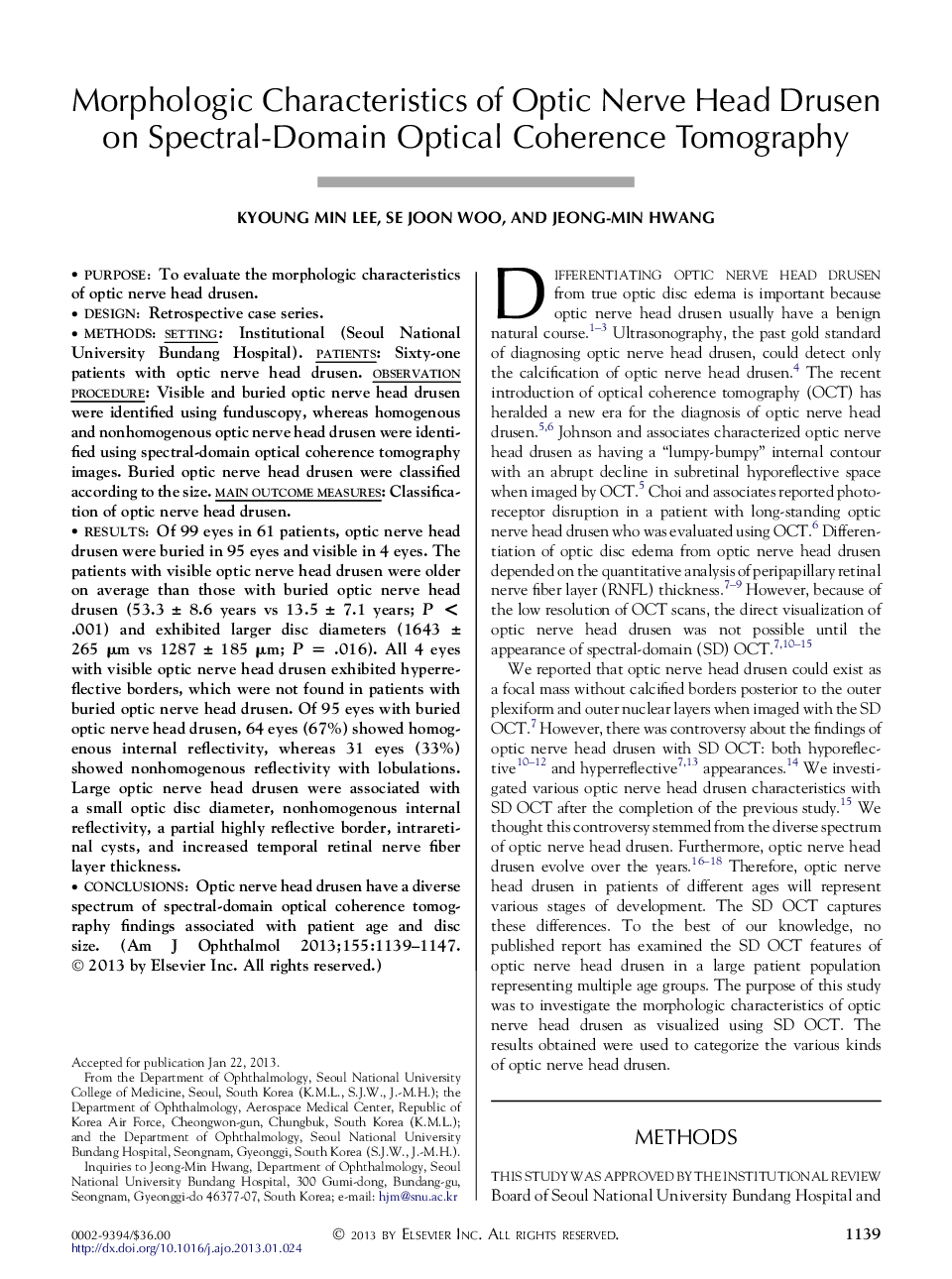| Article ID | Journal | Published Year | Pages | File Type |
|---|---|---|---|---|
| 6195955 | American Journal of Ophthalmology | 2013 | 10 Pages |
PurposeTo evaluate the morphologic characteristics of optic nerve head drusen.DesignRetrospective case series.Methodssetting: Institutional (Seoul National University Bundang Hospital). patients: Sixty-one patients with optic nerve head drusen. observation procedure: Visible and buried optic nerve head drusen were identified using funduscopy, whereas homogenous and nonhomogenous optic nerve head drusen were identified using spectral-domain optical coherence tomography images. Buried optic nerve head drusen were classified according to the size. main outcome measures: Classification of optic nerve head drusen.ResultsOf 99 eyes in 61 patients, optic nerve head drusen were buried in 95 eyes and visible in 4 eyes. The patients with visible optic nerve head drusen were older on average than those with buried optic nerve head drusen (53.3 ± 8.6 years vs 13.5 ± 7.1 years; P < .001) and exhibited larger disc diameters (1643 ± 265 μm vs 1287 ± 185 μm; P = .016). All 4 eyes with visible optic nerve head drusen exhibited hyperreflective borders, which were not found in patients with buried optic nerve head drusen. Of 95 eyes with buried optic nerve head drusen, 64 eyes (67%) showed homogenous internal reflectivity, whereas 31 eyes (33%) showed nonhomogenous reflectivity with lobulations. Large optic nerve head drusen were associated with a small optic disc diameter, nonhomogenous internal reflectivity, a partial highly reflective border, intraretinal cysts, and increased temporal retinal nerve fiber layer thickness.ConclusionsOptic nerve head drusen have a diverse spectrum of spectral-domain optical coherence tomography findings associated with patient age and disc size.
